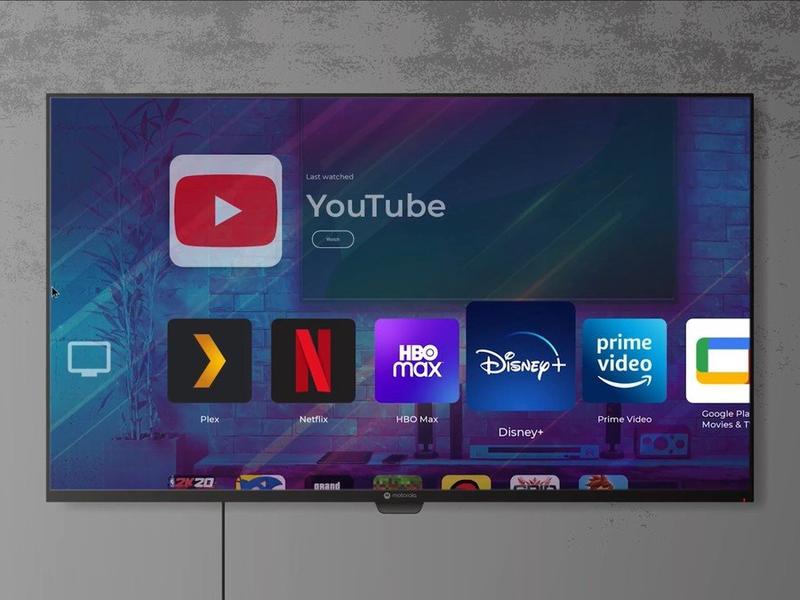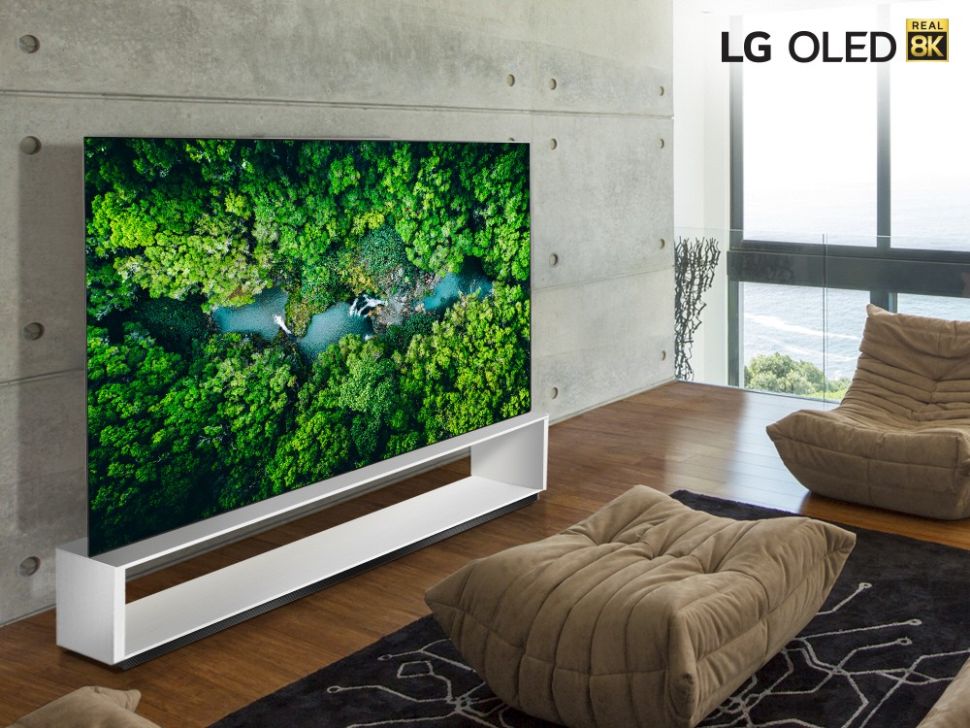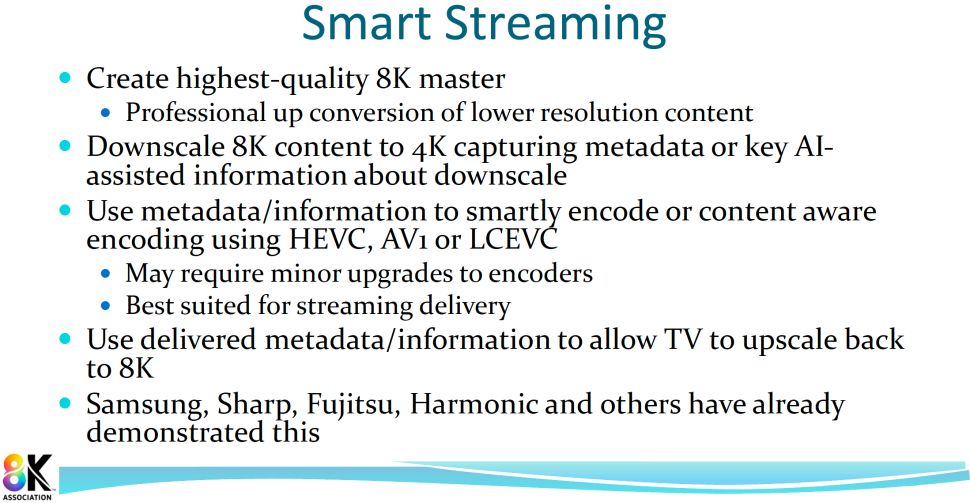8K Resolution Going Mainstream? What YouTube for Android TV Support Means for Next-Gen High-Res
Google has added “limited” 8K resolution (7680 x 4320) assist to its YouTube app for Android TV, its working system focusing on smart TVs, set-top boxes and the like. Previously, taking part in 8K YouTube movies required a correctly specced PC or console, however this latest addition is a key growth within the trade‘s adoption of 8K.
The Xbox Series X/Sand PlayStation 5 are already serving to to set the stage for wider adoption of 8K basically. Among the new best graphics cards additionally, support 8K.
The newest update for the YouTube app for Android TV (model 2.12.08) got here out last week, bringing support for playback of 8K movies if you have an TV display that is utilizing the Android 10 OS or newer, reviews PCWatch.
The announcement may seem odd to those that comply with YouTube, because the service added assist for 8K movies again in 2015 (only for PCs). Nevertheless, that is nonetheless key as a result of it brings 8K content to the living room without a console or PC. But how huge of a breakthrough is it?
Monitors and televisions that includes 8K decision are nonetheless costly. Many are simply stepping into 4K, and it will be some time earlier than the trade has satisfied buyers that an 8K display is critical.
Additionally making 8K {hardware} appear much less helpful is the dearth of 8K content truly accessible to take pleasure in. 8K content, be it broadcast, streaming movies or discs, are nonetheless uncommon. That is partially on account of complexities with value and 8K content distribution.
8K Production Costs
From a production point of view, every part is comparatively easy. There are broadcast, cinema and even consumer-grade 8K digital cameras (and even smartphones with 8K capabilities) accessible from greater than a dozen companies. Movies shot on movie can be scanned in 8K. There are 8K post-production {hardware}/software options and processes. A number of the main current, in addition to upcoming, initiatives had been not less than partly shot in 8K (Bloodshot, The New Mutants, Black Widow, Morbius), and there are already a bunch of flicks shot within the ARRIRAW 6.5K format (Mulan, The Revenant, The Call of the Wild).
Note that the ongoing 8K rollout coincides with the rollout of the Rec. 2020/BT.2020 color space each for cinemas and televisions, which provides sure challenges to 8K post-production. Due to larger necessities for processing power, storage and memory, 8K/Rec.2020 production gear and post-production instruments are costlier when in comparison with 2K and 4K. Subsequently, whereas beyond-4K {hardware} and software is out there, decision-makers have to invest in 8K manufacturing in a bid to make 8K content widespread.
8K Distribution Challenges
Shooting a film using a high-end camera and post-processing it in a 6.5K or 8K decision is a bit tougher and costlier compared to making 2K or 4K movie, however that is solely half of the story. The distribution of 8K content faces numerous roadblocks.
Several 8K projectors are already available, however that does not imply they’re flying off cabinets. Cinemas that just lately invested in 4K at 120 Hz Rec. 2020 projectors are having a very hard time being profitable off of them due to pandemic-related lockdowns and film launch delays. As a consequence, not lots of cinemas are 8K-ready today.
8K TVs are more widespread, however getting precise 8K content on them is considerably difficult. The 8K Affiliation says that it’s extremely unlikely that one other optical disc format for 8K films will probably be launched anytime quickly. That makes streaming the principle choice, since satellite tv for pc broadcasting is not precisely widespread. In distinction, native IPTV providers can be found in choose territories.
Distributing 8K content via the Internet is a bandwidth problem for streaming providers, ISPs and typically even finish customers. An 8K HEVC-encoded video stream can use 50-100 Mbps of bandwidth, which is pricey both from a bandwidth and storage point of view.
YouTube and Vimeo already have tons of of 8K movies encoded utilizing varied codecs (AV1 or HEVC), however lots of them come from TV producers eager to show capabilities of their newest units, journey bloggers, indie producer or even finish customers. This sort of content is not more likely to develop into extensively in style, but when extra folks get 8K TVs, and in style 8K content is launched, bandwidth may develop into an issue.
‘Smart Streaming’ Might Help
On the codec facet of issues, there are AV1, HEVC and LCEVC encoders accessible for 8K right now. They use numerous bandwidth for 8K videos. In the long term, extra superior AVS3 (finalized in 2020), EVC (feature freeze as of August 2020) and VVC/H.266 (finalized in 2020) codecs will probably be used. These codecs considerably improve the complexity of decoders (about twice that of HEVC), so their adoption will take a while. Moreover, new {hardware}, like SoCs and TVs, will probably be required to reap the benefits of the brand new compression codecs.
At the moment, streaming services and {hardware} makers are looking for a technique to cut back bitrates. One such method is dubbed Good Streaming.
Good Streaming is an umbrella term that describes proprietary approaches to scale back the bandwidth required for 8K streaming. A number of {hardware} producers — Samsung, Sharp and Fujitsu, simply to call a number of — are contemplating Good Streaming together with current codecs as essentially the most sensible choice for near-term 8K streaming resolution.
Samsung is looking to provide content creators with its AI upscaler algorithm to downscale their 8K grasp whereas capturing downscaling metadata and embedding it into the HEVC stream. In keeping with Samsung, its method reduces bandwidth necessities from 50 Mbps to 15 Mbps. This can be a proprietary resolution for Samsung TVs, however technically it could work with live TV. According to the 8K Affiliation, Amazon is experimenting with the technology.
Harmonic, a developer of video streaming and cable entry options, proposes to make use of content-adaptive encoding (CAE), together with current codecs. This resolution may work on a broad vary of {hardware} however will unlikely work for live TV.
Since Good Streaming will not be a common commonplace, it stays to be seen whether or not it’s going to take off. In any case, it all the time takes some time earlier than such requirements are finalized.
Final Thoughts
Google deserves some kudos for including 8K playback to its YouTube for Android TV app. It is potential that Microsoft and Sony’s newest game consoles nudged them on this course, nevertheless it‘s nonetheless an enormous step for mainstream 8K.
8K streaming assist by Android TVs, the Xbox Series X/S and PlayStation 5 units the stage for wider adoption of 8K basically and particularly 8K streaming.
Main Hollywood studios have produced quite a few 6.5K and 8K films already with extra to return. And not using a new optical disc format, they’re poised to distribute these films utilizing varied streaming platforms. Whereas we don’t anticipate blockbuster 8K films from the Big 5 to debut on YouTube, the latter may develop unique 8K content.







